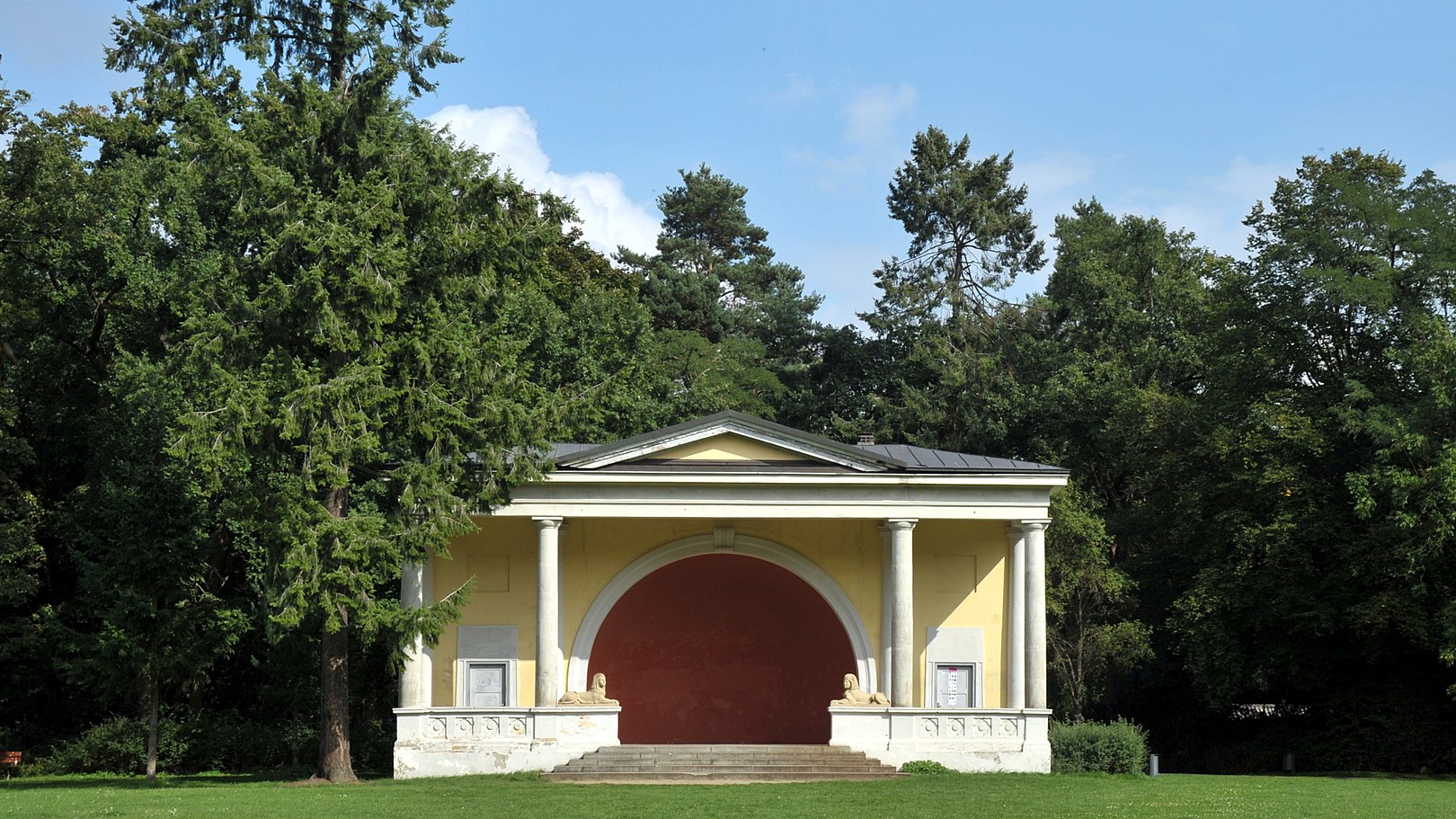Protection community Alt-Bamberg
The Schutzgemeinschaft Alt-Bamberg e. V. is a non-profit association that works to preserve the cityscape of the old town of Bamberg in its entirety and character and to promote the preservation, repair or reconstruction of architectural and cultural monuments in Bamberg.
founding
The association was founded on September 27, 1968 in protest against the demolition of the “Zum Marienbild” building on the Kaulbergfuß, which dominates the cityscape, in order to widen the street. The first chairman was Dr. Victor Harth was elected, who led and shaped the community until 1986. Werner Hottelmann and Irene Hottelmann-Schmidt (who provided the ideas for the association), Nina Schenk Countess von Stauffenberg and Gudila Freifrau von Pölnitz , who provided the association with premises in their Böttingerhaus estate, were among the founding members and influential personalities of the early days .
activities
General
From the beginning, the association has campaigned for awareness-raising in matters of monument protection. Founded at a time when historical buildings were often seen as not worth preserving and a hindrance to car traffic and the modern development of a city, the protection community contributed with imaginative actions to the growing understanding of the topic. In the 1970s and 1980s, for example, prostests, panel discussions, youth festivals and flea markets were organized. Today the old town of Bamberg is a UNESCO World Heritage Site and the preservation of the architectural heritage enjoys broad support from the population and local politics.
Twice a year the protection association publishes the memorial magazine “DenkMalWeiter” , which provides information on the current development of monument preservation in the city and the activities of the association.
The association organizes events, exhibitions, lectures and guided tours on the subject of urban development and monument protection and gives advice to those affected. The traditional activities also include walks that led to endangered or rescued monuments in the city of Bamberg.
The most elaborate project in recent years was the listing of the more than 2000 monuments in Bamberg on a website “Denkmal-Bamberg.de” . The site can be used both stationary and mobile and can thus provide information on the monuments in the area with the help of GPS during a stay in Bamberg.
As a carrier of public interests, the protection community takes a position on land-use planning in the Bamberg city ensemble. There is an active exchange with representatives of the chairs of monument preservation at the University of Bamberg , the Bamberg World Heritage Center, the other civic associations of the city, the Bavarian Monument Network and with representatives of local politics. The association attaches great importance to its impartiality.
In recent years, the association has been involved in cooperation with other associations and institutions in uncovering the wasteful use of public funds, especially in the renovation of prestigious public monuments, as they are often "broken down" and much of the substance worth preserving is irrevocably lost. Speculation with monuments is also one of the current problem areas.
successes
The association has already helped to save various monuments threatened with demolition. As early as the beginning of the 1970s, the suggestion to place the Villa Wassermann as the first historicist building in Bamberg to be listed as a historical monument kept the former bank from being demolished. In the 1980s he successfully campaigned for the power station and the old surgery, both works by the important architect Hans Erlwein , which were to give way to residential developments and a parking lot. Today they house the adult education center and the city archive. Further contributions to the preservation of the cityscape are the lock keeper's assistant houses at Mühlwörth and the lock keeper's house on the Erbainsel on the grounds of the Bamberg State Horticultural Show 2012 , the Hotel Deutsches Haus (today the city library). The most recent operations involved several buildings in the Lagarde barracks and the house at the key on Upper Sand Street.
The protection community also actively contributes to preservation itself, for example with the restoration of a baroque pavilion in the terrace garden of Michelsberg Monastery , the vandalism-damaged sphinx figures on the bandstand in Bamberg's grove or the renewal of a coat of arms on the wall of the Rhine-Danube Canal that is threatened by weathering . In 1984, with the acquisition of the house at Schillerplatz 9, an own domicile was prepared and moved into in accordance with the listed building standards.
In 2019, the smallest house in Bamberg (Oberer Kaulberg 31) was given to the association, a building from 1728 with approx. 20 m² of living space, which is now to be renovated.
Ingo Fessmann Prize
The Ingo Fessmann Prize is awarded annually for the exemplary safeguarding of structural details in the Bamberg cityscape that are worth preserving, such as B. 2009 for the restored boom of the former Zum Pfau brewery in Obere Königstrasse. The winners include the owners for the exemplary, listed renovation of the Aufseßhöfleins , a baroque pleasure and garden palace in Bamberg's north corridor, probably built according to plans by Johann Dientzenhofer .
Web links
- Website of the Schutzgemeinschaft Alt-Bamberg eV
- Monument directory for mobile use, Denkmal-Bamberg.de
Individual evidence
- ↑ Chronology on the club's website
- ↑ Denkmal-Bamberg.de
- ↑ List of activities on the club's homepage ( memento of the original from July 26, 2010 in the Internet Archive ) Info: The archive link has been inserted automatically and has not yet been checked. Please check the original and archive link according to the instructions and then remove this notice.
- ^ Report of the Bayerischer Rundfunk from October 2, 2019 on the activities of the German Property Group in Bamberg.
- ↑ Annual report 2006
- ↑ The smallest house in Bamberg is to become a scholarship house for a student of monument conservation

